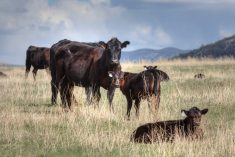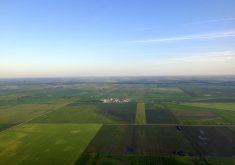Agriculture’s role in reducing carbon emissions and protecting the environment looms large in the provincial government’s, Made-in-Manitoba Climate and Green Plan.
The word “agriculture” appears 34 times in the 60-page document.
“Manitoba’s farmers are at the front lines of climate change and need to be at the forefront of solutions,” the plan says.
“The Manitoba government is committed to working with producers and consumers alike to identify and develop the solutions we need to make agriculture an integral part of our vision of a clean, green and climate-resilient province.”
Read Also

Do the math on replacement heifers
Beef farmers should know what it costs them to raise a replacement heifer and, based on that, decide the best replacement strategy to grow both their herd and their profits.
One suggestion is to create the Manitoba Centre for Sustainable Agriculture to provide research and support to farmers in co-operation with industry, universities, and non-governmental organizations (NGOs).
The plan not only proposes programs to assist farmers to reduce and store carbon emissions, but suggests policies that could increase crop demand.
It suggests increasing Manitoba’s biodiesel mandate to five per cent from the current two. It estimates that would cut carbon emissions over the next five years by 360,000 to 431,000 tonnes. That would be the second-largest cut behind the 1.07-million-tonne reduction expected from the $25-a-tonne carbon tax.
Canola is an ideal feedstock for biodiesel production.
However, the plan doesn’t say the province will increase the biodiesel mandate. When asked to clarify, a government official said everything is on the table.
“But none of these measures will be enacted until after presenting the plan to Manitobans, receiving their feedback.”
The plan also suggests encouraging the “voluntary” use of more ethanol. That would increase the demand for wheat and corn.
Agriculture produces 32 per cent of Manitoba’s carbon, second only to transportation.
“While agriculture is a significant source of greenhouse gas emissions, agricultural soils and biomass can also serve as effective carbon sinks, helping to lock harmful carbon emissions in the ground and prevent carbon dioxide from entering the atmosphere,” the plan says.
During a technical briefing a government official told reporters it’s difficult for farmers to cut emissions quickly, but they can over time.
The following are some of the plan’s proposals for agriculture:
- Implement an ecological goods and services program based on the Alternate Land Use Services model to reduce flooding, improve water quality and nutrient management and enhance biodiversity to benefit society.
- Support on-farm practices that provide climate change adaptation and mitigation.
- Expand precision farming to improve fertilizer efficiency.
- Support natural fibres for biocomposites.
- Evaluate and address risks, vulnerabilities and opportunities facing agricultural due to extreme weather events and climate change.
- Explore a carbon offset program for agriculture, wetlands and forests.
- Use a watershed approach through conservation districts to retain water and restore wetlands to improve water quality and mitigate floods and drought. This could be done through GRowing Outcomes for Watersheds (GROW). It would be delivered in partnership with landowners, NGOs and federal and municipal governments.
- Reduce the barriers to tile drainage, but also consider potential negative downstream and water-quality effects.
- Work with the Keystone Agriculture Producers, conservation districts and others to implement the 4R fertilizer program (right time, amount, place and source).
- Map wells and aquifers.
- Encourage wetland and grassland preservation and restoration, rotation grazing, cover crops and zero till.
The climate and green plan lists other ways Manitoba can cut emissions:
- The creation of Efficiency Manitoba, an agency to promote cuts in electrical and natural gas consumption through “green” innovations.
- Diverting organic, methane-emitting waste, from landfills.
- Phasing out Manitoba’s last coal-fired generator ahead of schedule in 2018.
- A rebate to encourage retrofitting heavy-duty diesel truck engines.
- Measures to manage goods containing ozone-depleting substances.
- Replace 100 city diesel buses with electric ones.
- Reduce the Manitoba government’s emissions.
- Convert propane-heated homes in Churchill to electric.




















